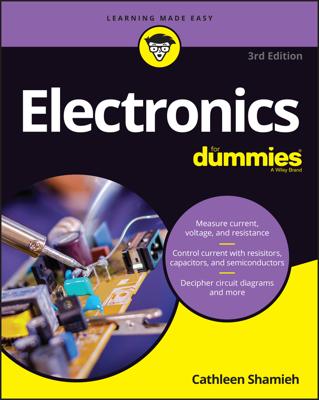One of the biggest shock risks in electronics comes from voltages that you didn't expect to be present. It's easy enough to keep your eye on the voltages that you know about, such as in your power supply or batteries, but some electronic circuits are designed to amplify voltages. So even though your circuit runs on six-volt batteries, there may be much larger voltages at specific points within your circuit.
In addition, some electrical devices can actually store electric charge long after the power from your circuit has been disconnected. The most notorious device with this characteristic is the capacitor, which alternately builds up and then releases electrical charges. Thus, you should be wary of any circuit that contains capacitors — especially if the capacitors are large.
Common ceramic-disk capacitors, which are typically smaller than a tiddlywink, don't store much charge. However, if your circuit has capacitors the size of batteries, you should be very careful when working around them. Such capacitors can hold large charges long after the power has been cut off.
Here are some safety points concerning capacitors:
One of the most common places to find large capacitors is in the power-supply circuit. Any electronic device that plugs into a household electrical outlet has a power-supply circuit that may contain a large capacitor. Be very careful around these capacitors. In fact, if the power-supply circuit is inside its own enclosed box, don't open the box. Instead, replace the entire power supply if you suspect it's bad.
Another common place to find high-voltage capacitors is in a flash camera. Even though the battery may be just 1.5 V, the capacitor that drives the flash unit may well be holding a charge of 300 V or more.
Before working on a circuit that contains a capacitor, always discharge the capacitor first. You can discharge small capacitors by shorting out their leads with the blade of a screwdriver. Make sure you touch only the insulated handle of the screwdriver while you short out the leads, and don't touch any other part of the circuit with your free hand.
Larger capacitors should be discharged by connecting their leads to a lamp or a large resistor. The easiest way to do this is to wire up a lamp holder to a pair of alligator clips, screw a lamp into the lamp holder, then carefully connect the clips to the capacitor leads. If the capacitor is holding a charge, the lamp will glow for a moment as the capacitor discharges through the lamp.
If you don't feel completely confident in what you're doing where large capacitors are concerned, walk away from the project.

